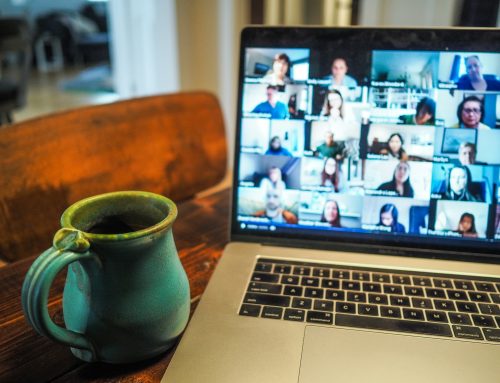 There is an age-old saying: In the Internet, no one knows you’re a dog. It is commonly used as a reference to those who portray themselves, through various profiles, with altered images and a carefully constructed story, as something which, in real life, they are not. The construction of an alternative ego, a different personality slightly removed from reality is common to all Internet users regardless of age, gender or social position. Everyone wishes to be seen as something slightly better, something slightly different to what they really are, to appear more interesting, more attractive. It is an absolutely normal state of affairs, a human failing, if you will, which we all know, all practice and all accept.
There is an age-old saying: In the Internet, no one knows you’re a dog. It is commonly used as a reference to those who portray themselves, through various profiles, with altered images and a carefully constructed story, as something which, in real life, they are not. The construction of an alternative ego, a different personality slightly removed from reality is common to all Internet users regardless of age, gender or social position. Everyone wishes to be seen as something slightly better, something slightly different to what they really are, to appear more interesting, more attractive. It is an absolutely normal state of affairs, a human failing, if you will, which we all know, all practice and all accept.
Life in general would be a very boring event if there wasn’t a little bit of spice added somewhere along the line, be it the fascination of someone else’s experiences or their imagination, the unusual, the compelling, the fantastic. There is a difference, though, between the real with a few added details, a little enhancement, a touch of fantasy and a downright fake; someone who creates a profile on one or another of the many social media sites with the sole intention of fooling others for material or personal gain.
The number of fakes, of false profiles on social media sites, and their potential range of influence cannot be underestimated. Facebook has officially admitted that over eighty million accounts on its highly popular social platform may be considered as fake and it is likely that similar networks, including the micro-blogging site Twitter, could produce similar high figures. It is difficult to say whether individual accounts have been maliciously created or whether they are considered a mild prank by those using them when taking the numbers as a whole but, as a recent example on Twitter shows, their influence can be wide ranging.
Twitter normally has a system of verification in place for well known, popular or high ranking individuals as well as some business and news services. Here the verification ensures that the person or people using the account are who they say they are and such accounts have a small symbol next to the user name for all to see.
There is, however, no system in place to protect certain names from use. An individual who decides to use the name of a popular and expensive perfume, for example, will be accepted and allowed full access until such time as the trade mark holder lodges an official complaint to assert their legal rights. Thus an individual was capable of changing an already existing account’s name to that of a popular news service and promulgating the news that Margaret Thatcher, former Conservative Prime Minister, had died. The story was immediately snapped up by other news services and by many individual Twitter users, despite the lack of a verification symbol.
Twitter also has the disadvantage, as far as normal users are concerned, of having many so-called parody accounts: users who claim to be a certain person but, on their short biography, openly admit they are not this person and are only playing games with the name. Often these accounts propagate scurrilous stories about stars, make fun of their actions and beliefs or re-post authentic comments and events as if they were their own. Not all parody accounts, despite the rules laid down by Twitter, make it clear that they are such and these may be termed fake accounts too.
Far worse, for the normal user, are the accounts, regardless of which social media network is being used, where it is not initially clear that the account is a fake, where the user has specifically created the account in a different name, with a different personality, either to maliciously attack that person or to use the account to influence or harm others. Such accounts are very popular, since there are no safeguards or checks on identity, amongst pedophiles and other predators who have a personal interest in remaining as anonymous as possible. Such accounts can often be found on sites catering for minors, especially chat rooms and similar forums where private and web cam conversations are possible.
Technological advances have made the flushing out of fakes both easier and harder. With each new advance towards more openness, each move towards personal identification or verification there comes a new system or method of hiding, of disguising true identity and intentions. Software alone can no longer verify the identity of a person, or their intentions, behind a faked personality or profile, but can be used as an aid to commonsense.
That said, the intentions of a person visiting a chat room or forum solely intended for minors are easy enough to guess and, in almost all cases, revolve around sex with under-aged children or personal sexual satisfaction through the use of a web cam and the manipulation of a child to do things which are not legal or acceptable.
The available software to flush out fakes begins with a simple search engine. The checking of other social media networks for similar profiles, for the same or similar photographs, for cached activity connected to an e-mail address or a specific name. Beyond that it comes down to experience and the level of trust a person wishes to give a new connection.
It is a good rule of thumb, as far as Internet friends are concerned, not to trust them at all until such time as they have proven themselves, no matter how long it may take. It is also advisable to know exactly how a specific social media network operates, how to report someone, how to block someone, how to gain protection against attack or unwanted attention. Here the experience of others, especially for new users, is of the utmost importance and should be called upon at all times. Likewise, in the case of unwanted or improper attention – such as stalking – other real life and virtual people should be turned to for help, with the first choice being real people who the user already knows and trusts.
The greatest aid to flushing out fakes, especially for older users with more Internet experience, is commonsense. A profile which appears to be too good to be true, too perfect, probably is just that. New profiles without any history of use behind them should also be treated with some skepticism initially.
Profiles including professional photographs or those which look as if they have been scanned in from a magazine and especially those where the image of a well known personality has been used should be treated with caution, if not immediately avoided. There may be any number of reasons why a person does not wish to show their full face on the Internet, or, why they cannot or will not publish their location, but it is up to the profile user to state their case, not for potential friends to be forced to call them out.
The language a person uses in conversation, in their posts and similar, can also often give a clue as to their age at the very least. A twelve year old writes and talks in a completely different manner to a sixteen year old who, following on, has a different manner of expression to that of a twenty-five year old.
Men write in a different fashion and style to women and their interests often have no relation one to the other. Likewise the level of education, indicated through what they write and the level of knowledge behind their posts, can give a good indication of whether a person is who they claim to be or not, as can knowledge of a specific trade or business and their depth of knowledge over hobbies and pastimes.
At the same time, it is important to remember that some people, either because of their situation or a personal phobia, for example, may have exceptional reasons for not creating a profile in their own name. This is where the level of trust shown comes into play, alongside commonsense. A person who has to hide their true identity for work or social position reasons may well be acceptable, one who hides their identity because of an existing relationship less so.
In almost all cases, however, the answer for fake profiles should be Report, Flush or Block, Move on. Someone who is not prepared to reveal their true self when building a friendship – online or in real life – but insists on hiding behind a different identity, a faked personality and interests, is not going to be a good friend, and certainly not a person one should be willing to meet up within real life.





